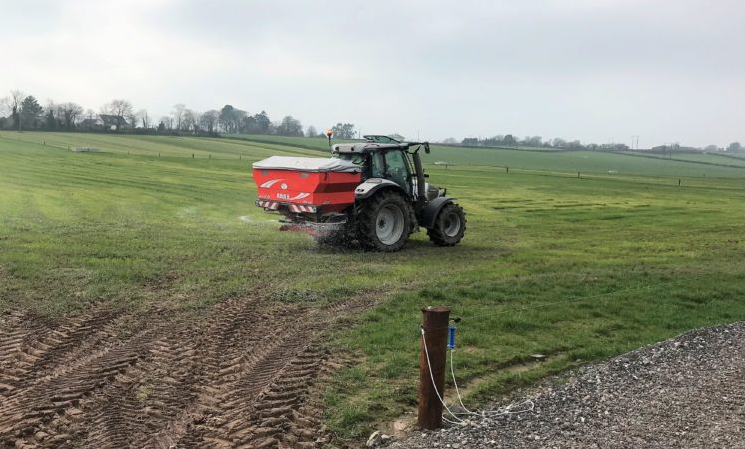With soils requiring an extra mineral boost on farms this spring to aid grass production, it’s time to take a look at what exactly farmers should be spreading on the land when it comes to applying chemical fertiliser.
The first thing to do is take a soil sample, and base your fertiliser requirements off the results.
The rising cost of fertiliser prices this spring reinforces the message that any granular spread needs to be used to its maximum, in order to achieve the returns of enhanced grassland production.
Spreading protected urea
In cases where a farmer is looking to apply solely nitrogen (N) to paddocks, they may want to consider spreading protected urea.
Ideally, farmers should outline a fertiliser and slurry plan and ensure that they are covering all levels when it comes to phosphorus (P) and potassium (K) requirements.
Teagasc research has shown that protected urea consistently and reliably produces top yields under spring and summer conditions. It is significantly cheaper per kg of N than CAN (calcium ammonium nitrate) – with significantly lower emissions of the dangerous green house gas (GHG) – nitrous oxide (N2O).
Benefits of protected urea
Nitrate leaching can occur during times of heavy or prolonged rainfall. One main advantage is that protected urea converts to the ammonium form of nitrogen when applied to soil.
This form of ammonium is more stable in soil than nitrate and is less susceptible to leaching due to its positive charge.
In comparison to CAN, which is made up of half ammonium and half nitrate, the nitrate which is placed in the soil is vulnerable to being leached away if unfavourable weather occurs.
A recent report by Cathal Somers from Teagasc stated that by spreading protected urea, the soil microbes convert ammonium to nitrate almost like a steady conveyer belt.
Plants take up both nitrate and ammonium as required for growth, and have access to a steady flow of available nitrogen as soon as the protected urea granules begin to melt.
In cases where ammonia is taken up into the atmosphere, which can occur when spreading traditional urea, this can then be deposited into water bodies or other sensitive habitats causing deterioration in water quality and poor grass production on the farm.

